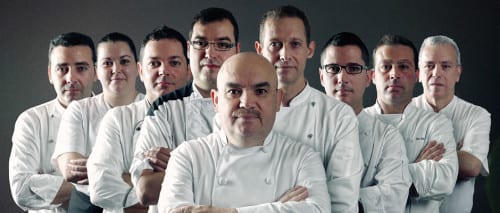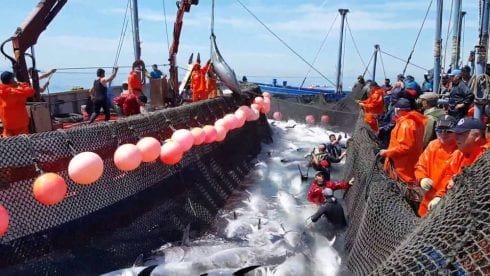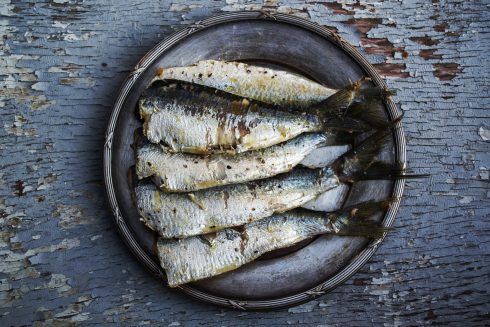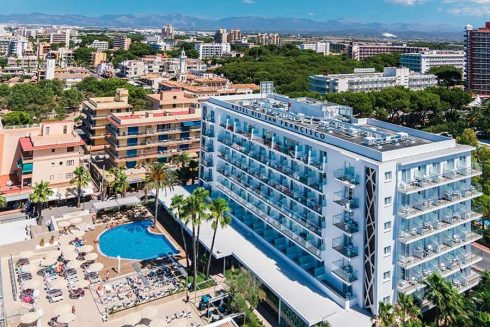“EL atún rojo is a magical product,” says Pepe Melero, owner and maestro at El Campero, the Barbate restaurant that put the Costa de la Luz on the global gastronomic map.
“Tuna is in love with the Mediterranean and yearns for the sea’s love song,” waxes this lyrical chef. “It is sincere, surprisingly flavoursome, capable of provoking real emotional responses in those who taste it.”
Pepe is talking about the Atlantic bluefin, which arrives in the Mediterranean every late spring to spawn. With mature specimens reaching up to half a ton in weight in as little as 10-15 years, bluefin – or red tuna, as it is known in Spanish because of the meaty colour of its flesh – is one of the priciest delicacies on the planet.
In January 2013, a 222-kilo Pacific bluefin sold for more than €1.1 million (155.4 million yen) in Tokyo’s Tsukji market, a new world record equivalent to more than €5,000 per kilo.
Ever since the Phoenicians sailed from the coasts of the Levant and north Africa some 3,000 years ago to establish a trading post at Gades – now Cadiz – gaditanos and fishermen the world over have prospered from the bountiful waters where the Atlantic and Mediterranean meet.
To catch the biggest fish, the Phoenicians invented an intricate maze of interconnecting trap nets, known as almadrabas – or ‘place for fighting’ in Andalusian Arabic – that trap only the large, mature tuna, allowing smaller fish to escape. Today, the four fishing towns of Conil de la Frontera, Barbate, Zahara de los Atunes and Tarifa continue the practice.
Fight to the death
Trapping the tuna is one thing. Landing fish that average 2.5m in length, weighs between 200-400 kilos and can swim at speeds up to 70 km/h is quite another.
Not surprisingly, la levantá – the raising – is some spectacle. This is when the central trap net or copo is hauled from the depths by hand and pulley to cries of ‘¡Arriá, arriá!’ (Andaluz for ariba or ‘Up, up’). Dozens of fishermen in boats form a ring around the cone-shaped copo, from which there is no escape. As the net closes tighter, rising closer and closer to the surface, the sea boils with these captive, thrashing giants.
Simultaneously, a team of brave copeadores – the men who enter the copo – slide into the waist-deep water to slip a rubber loop around the fishes’ flailing tails or hook them in the gills with a gaff. The tuna are then pulledfree from the water where they hang suspended, their scales glinting in the sunshine, for a few fleeting moments. Then their spinal cords are severed, they are packed in ice and taken to shore for the ronqueo (named after the ‘grunting’’ sound the knife makes when they are cut up).
Tuna butchery is an art and this fish offers nose-to-tail dining, hence its ‘pig of the sea’ pseudonym. Atlantic bluefin on their way to the Mediterranean are particularly prized, due to the unrivalled quality of their flesh and fat before they undergo the rigours of spawning.
Despite being caught traditionally for millennia, overfishing – fuelled by growing worldwide demand for sushi and indiscriminate trawling in the Med by French, Italian and Japanese fleets – nearly killed off the Atlantic bluefin population. It wasn’t until the mid-2000s that global quotas were introduced to help the species recover.
Birth of a legend
Pepe Melero is a major employer in the area, with 51 staff working at his restaurant El Campero in Barbate and more recent addition, the Taberna de El Campero in neighbouring Zahara de los Atunes. Many of his team have been with him from the outset: his partner José Manuel Núñez for over 30 years, his grill chef Juan Manuel Varo for 20 and Julio Vázquez, head of the creative department for 12.
A self-confessed ‘non-conformist’, his job is all about ‘getting – and giving – satisfaction’.
“We strive to evolve and never do the same thing twice,” he says. “You have to keep thinking, learning and questioning,” he enthuses. “In Barbate, we breathe salt and light. It inspires our senses and drives our existence. Our cooking is a reflection of that: simple, humble, caring, full of feeling, emotion and memories.”
Pepe grew up behind a bar – a ‘spit-and-sawdust tabanco (spit-and-sawdust tavern) run by his father which opened its doors at four every morning to serve café and copas to stallholders, traders and shoppers. But he came into the trade by accident. He was studying to be an Air Force radio engineer in Madrid when his father fell ill and he found himself running the business at 19, along with his mother and future wife.
Driven by his spirit of adventure and desire to succeed, he took distance-learning courses in cooking and catering and began inventing his own signature dishes. He noticed that the Japanese, who buy over three-quarters of the almadraba catch, only wanted the high-priced lomo (loin) and ijar or ventresca (belly) cuts, not the head, tail or innards. Of every 100 kilos caught, he realised that almost 33% had no commercial value and was either being given away or tossed in the bin.
Nose-to-tail dining
Picking over the leftovers he discovered a cut behind the head called morrillo (little cheek). Cooked fast over a high flame, the combination of meat and gelatin tasted like nothing else he’d ever tried from the sea or land. Today morrillo is a recognised delicacy that costs over €50 a kilo!
When Barbate’s market moved from the quayside to the town centre, Pepe followed suit, opening El Campero as a tasca (a bar serving food) in 1994. Japanese tuna buyers from the factory ships arrived in his wake, bringing their own chefs and dishes to Pepe’s kitchen. The El Campero team also taught the Japanese a thing or two about home-style gaditano cooking.
In 2003, Pepe and his partner and right-hand man José Manuel Núñez, who has been with him for 30 years, were invited to San Sebastian, Spain’s gastronomic Mecca, to host a presentation for 1,800 culinary luminaries, including Spain’s top food critics. Rather than just talk tuna, they got stuck in literally, carving one up for the salivating crowd into the 24 cuts that this most generous of fish provides. Ronqueo demonstrations are a big tourist attraction today.
Critical acclaim
It was a turning point for the two men. Critical success ensued, backed by a rising tide of clients coming from all over Spain and beyond. El Campero won a second ‘sun’ in Repsol’s celebrated gastronomic guide to Spain, and growing recognition from other innovative chefs who make the pilgrimage to Pepe’s in increasing numbers to learn from the maestros.
Today, 80% of El Campero’s output centres on tuna and its creative department is constantly evolving texture and flavour, from bite-sized morsels of lip-smacking goodness like piruletas de huevas de leche (lollipops made from tuna sperm, no less) to meaty main courses like costilla de atún (tuna chops), served with papas a lo pobre (poor-man’s potatoes) and a béarnaise-style sauce.
Typically, Pepe humbly understates his role: “As people, we are not important,” he says. “It’s what we do that matters.”
Despite the long hours and huge sacrifices that his family and team have made to make the restaurants a success, Pepe begins every day with the same ‘ilusión’ he embodied at the outset of his incredible culinary journey.
To this inspirational chef, El Campero is just another part of the circle of life that connects Atlantic bluefin tuna to all those – fishermen, cooks, patrons – who live and work in the magical, salt- and light-filled world of the Costa de la Luz.











